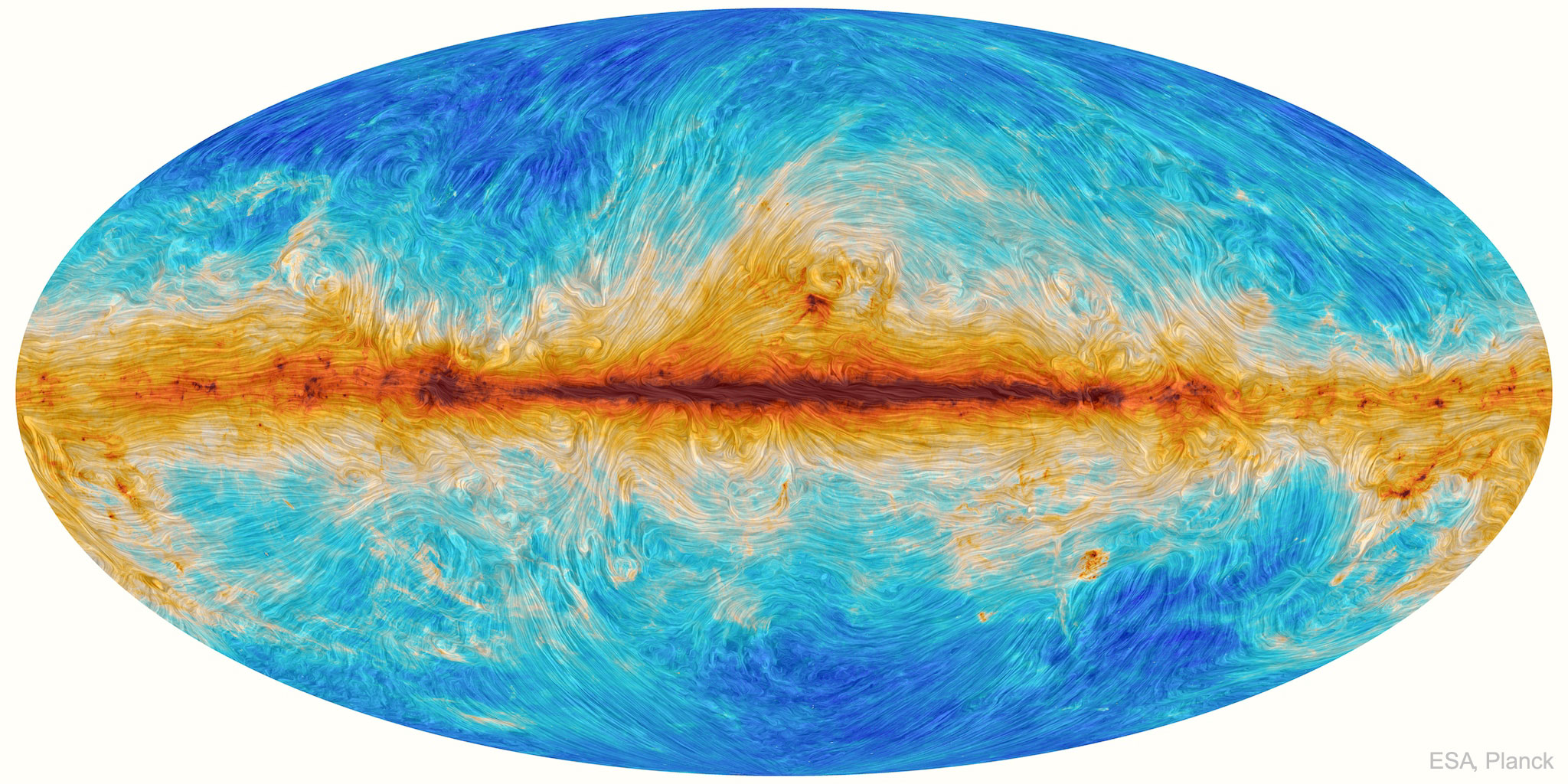2020 June 17
Magnetic Streamlines of the Milky Way
Image Credit: ESA, Planck; Text: Joan Schmelz (USRA)
Explanation: What role do magnetic fields play in interstellar physics? Analyses of observations by ESA’s Planck satellite of emission by small magnetically-aligned dust grains reveal previously unknown magnetic field structures in our Milky Way Galaxy — as shown by the curvy lines in the featured full-sky image. The dark red shows the plane of the Milky Way, where the concentration of dust is the highest. The huge arches above the plane are likely remnants of past explosive events from our Galaxy’s core, conceptually similar to magnetic loop-like structures seen in our Sun’s atmosphere. The curvy streamlines align with interstellar filaments of neutral hydrogen gas and provide tantalizing evidence that magnetic fields may supplement gravity in not only in shaping the interstellar medium, but in forming stars. How magnetism affected our Galaxy’s evolution will likely remain a topic of research for years to come.
Tomorrow’s picture: open space
银河系的磁场线
图像提供:ESA, Planck; 文本: Joan Schmelz (USRA)
说明:在星际物理领域,磁场扮演何种角色?在分析欧洲航天局·普朗克卫星,观测顺磁场排列的尘埃微粒之辐射数据之后,找到了我们银河系先前不知道的磁场结构,如这幅主题全天图里的曲线所示。图像中,暗红色的区域是我们银河系的盘面,因为该处拥有最密集的尘埃。盘面上方的庞大拱形结构,可能是银核过去发生过爆发事件的遗迹,在观念上,类以我们太阳大气中的环形磁场结构。这些弯曲的磁场线和丝缕状的星际中性氢气重合,因此暗示在塑形星际物质和恒星形成上,磁场或许可以为重力提供额外的助力。在接下的年代里,磁性到底会如何影响我们星系的演化,可能会一直是研究的题材。
明日的图片:open space



